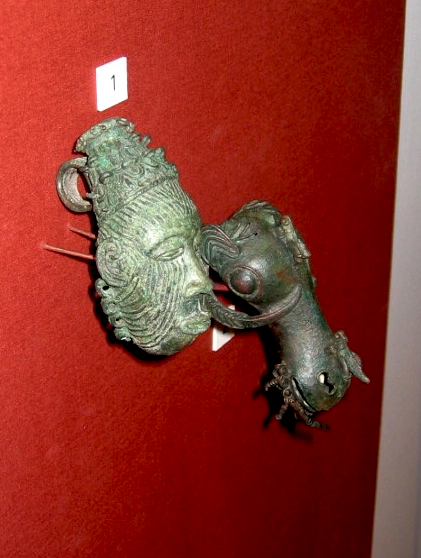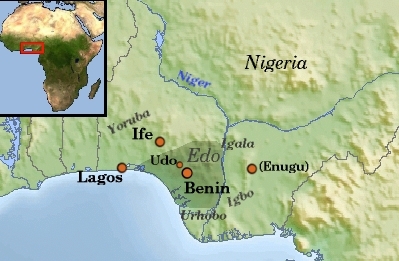|
Philenoptera Cyanescens
''Philenoptera cyanescens'' is a species of shrub from family Fabaceae. It is commonly known as elu in Yoruba, anunu by Igbo people as talaki in Hausa, sauru in Tiv and as ebelu by the Edo people The Edo or Benin people are an Edoid ethnic group primarily found in Edo State, Southern part of Nigeria. They speak the Edo language and are the descendants of the founders of the Benin Empire. They are closely related to other ethnic group ... It is a traditional source of indigo in West Africa to dye fabric. References External links * Plants described in 1856 Millettieae Flora of Nigeria Plant dyes {{Millettieae-stub ... [...More Info...] [...Related Items...] OR: [Wikipedia] [Google] [Baidu] |
Shrub
A shrub (often also called a bush) is a small-to-medium-sized perennial woody plant. Unlike herbaceous plants, shrubs have persistent woody stems above the ground. Shrubs can be either deciduous or evergreen. They are distinguished from trees by their multiple stems and shorter height, less than tall. Small shrubs, less than 2 m (6.6 ft) tall are sometimes termed as subshrubs. Many botanical groups have species that are shrubs, and others that are trees and herbaceous plants instead. Some definitions state that a shrub is less than and a tree is over 6 m. Others use as the cut-off point for classification. Many species of tree may not reach this mature height because of hostile less than ideal growing conditions, and resemble a shrub-sized plant. However, such species have the potential to grow taller under the ideal growing conditions for that plant. In terms of longevity, most shrubs fit in a class between perennials and trees; some may only last about five y ... [...More Info...] [...Related Items...] OR: [Wikipedia] [Google] [Baidu] |
Fabaceae
The Fabaceae or Leguminosae,International Code of Nomenclature for algae, fungi, and plants. Article 18.5 states: "The following names, of long usage, are treated as validly published: ....Leguminosae (nom. alt.: Fabaceae; type: Faba Mill. Vicia L.; ... When the Papilionaceae are regarded as a family distinct from the remainder of the Leguminosae, the name Papilionaceae is conserved against Leguminosae." English pronunciations are as follows: , and . commonly known as the legume, pea, or bean family, are a large and agriculturally important of |
Yoruba People
The Yoruba people (, , ) are a West African ethnic group that mainly inhabit parts of Nigeria, Benin, and Togo. The areas of these countries primarily inhabited by Yoruba are often collectively referred to as Yorubaland. The Yoruba constitute more than 42 million people in Africa, are a few hundred thousand outside the continent, and bear further representation among members of the African diaspora. The vast majority of the Yoruba population is today within the country of Nigeria, where they make up 21% of the country's population according to CIA estimations, making them one of the largest List of ethnic groups of Africa, ethnic groups in Africa. Most Yoruba people speak the Yoruba language, which is the Niger–Congo languages, Niger-Congo language with the largest number of native or L1 speakers. In Africa, the Yoruba are contiguous with the Yoruboid languages, Yoruboid Itsekiri to the south-east in the northwest Niger Delta, Bariba people, Bariba to the northwest in Benin a ... [...More Info...] [...Related Items...] OR: [Wikipedia] [Google] [Baidu] |
Igbo People
The Igbo people ( , ; also spelled Ibo" and formerly also ''Iboe'', ''Ebo'', ''Eboe'', * * * ''Eboans'', ''Heebo''; natively ) are an ethnic group in Nigeria. They are primarily found in Abia, Anambra, Ebonyi, Enugu, and Imo States. A sizable Igbo population is also found in Delta and Rivers States. Large ethnic Igbo populations are found in Cameroon, Gabon, and Equatorial Guinea, as well as outside Africa. There has been much speculation about the origins of the Igbo people, which are largely unknown. Geographically, the Igbo homeland is divided into two unequal sections by the Niger River—an eastern (which is the larger of the two) and a western section. The Igbo people are one of the largest ethnic groups in Africa. The Igbo language is part of the Niger-Congo language family. Its regional dialects are somewhat mutually intelligible amidst the larger "Igboid" cluster. The Igbo homeland straddles the lower Niger River, east and south of the Edoid and Idomoid gr ... [...More Info...] [...Related Items...] OR: [Wikipedia] [Google] [Baidu] |
Hausa People
The Hausa ( autonyms for singular: Bahaushe ( m), Bahaushiya ( f); plural: Hausawa and general: Hausa; exonyms: Ausa; Ajami: ) are the largest native ethnic group in Africa. They speak the Hausa language, which is the second most spoken language after Arabic in the Afro-Asiatic language family. The Hausa are a diverse but culturally homogeneous people based primarily in the Sahelian and the sparse savanna areas of southern Niger and northern Nigeria respectively, numbering around 83 million people with significant indigenized populations in Benin, Cameroon, Ivory Coast, Chad, Sudan, Central African Republic, Republic of the Congo, Togo, Ghana, Eritrea, Equatorial Guinea, Gabon, Senegal and the Gambia. Predominantly Hausa-speaking communities are scattered throughout West Africa and on the traditional Hajj route north and east traversing the Sahara, with an especially large population in and around the town of Agadez. Other Hausa have also moved to large coastal cities in the re ... [...More Info...] [...Related Items...] OR: [Wikipedia] [Google] [Baidu] |
Tiv People
Tiv (or Tiiv) are a Tivoid ethnic group. They constitute approximately 2.4% of Nigeria's total population, and number over 5 million individuals throughout Nigeria and Cameroon. The Tiv language is spoken by about 5 million people in Nigeria with a few speakers in Cameroon. Most of the language's Nigerian speakers are found in Benue, Taraba, Nasarawa, Plateau, Cross rivers, Adamawa, Kaduna, and Abuja States. The language is a branch of Benue–Congo and ultimately of the Niger–Congo phylum. In pre-colonial times, the Fulani ethnic group referred to the Tiv as "Munchi" (also sometimes written Munshi e.g. Duggan 1932 and Ako 1981), a term not accepted by Tiv people. They depend on agricultural produce for commerce and life. History The Tiv believe they emerged into their present location from the southeast. It is claimed that the Tiv wandered through southern, south-central and west-central Africa before arriving at the savannah lands of West African Sudan via the ... [...More Info...] [...Related Items...] OR: [Wikipedia] [Google] [Baidu] |
Edo People
The Edo or Benin people are an Edoid ethnic group primarily found in Edo State, Southern part of Nigeria. They speak the Edo language and are the descendants of the founders of the Benin Empire. They are closely related to other ethnic groups that speak Edoid languages, such as the Esan, the Afemai, the Isoko, and the Urhobo. The name "Benin" (and "Bini") is a Portuguese corruption, ultimately from the word "Ubini", which came into use during the reign of Oba (ruler) Ewuare the Great, c. 1440. "Ubini", a word meaning Vexation, used by Prince Oranmiyan, son of the wealthy ruler of Uhe (Ife) to describe the frustration he encountered after he was invited to rule benin. ''Ubini'' was later corrupted to ''Bini'' by the mixed ethnicities living together at the centre; and further corrupted to ''Benin'' around 1485 when the Portuguese began trade relations with Oba Ewuare giving them coral beads. History Administrative region Edo people can be found in Nigeria's Edo Sta ... [...More Info...] [...Related Items...] OR: [Wikipedia] [Google] [Baidu] |
Plants Described In 1856
Plants are predominantly photosynthetic eukaryotes of the kingdom Plantae. Historically, the plant kingdom encompassed all living things that were not animals, and included algae and fungi; however, all current definitions of Plantae exclude the fungi and some algae, as well as the prokaryotes (the archaea and bacteria). By one definition, plants form the clade Viridiplantae (Latin name for "green plants") which is sister of the Glaucophyta, and consists of the green algae and Embryophyta (land plants). The latter includes the flowering plants, conifers and other gymnosperms, ferns and their allies, hornworts, liverworts, and mosses. Most plants are multicellular organisms. Green plants obtain most of their energy from sunlight via photosynthesis by primary chloroplasts that are derived from endosymbiosis with cyanobacteria. Their chloroplasts contain chlorophylls a and b, which gives them their green color. Some plants are parasitic or mycotrophic and have los ... [...More Info...] [...Related Items...] OR: [Wikipedia] [Google] [Baidu] |
Millettieae
The tribe Millettieae is one of the subdivisions of the plant family Fabaceae. The following genera are recognized by the USDA. In 2019, some genera USDA places in this tribe were moved to tribe Wisterieae; these are listed at the end. * ''Aganope'' Miq. * '' Antheroporum'' Gagnep. * '' Apurimacia'' Harms * '' Austrosteenisia'' R. Geesink * '' Bergeronia'' Micheli * '' Burkilliodendron'' Sastry * '' Chadsia'' Bojer * ''Craibia'' Harms & Dunn * '' Craspedolobium'' Harms * '' Dahlstedtia'' Malme * '' Dalbergiella'' Baker f. * '' Deguelia'' Aubl. * ''Derris'' Lour. * '' Dewevrea'' Micheli * '' Disynstemon'' R. Vig. * ''Fordia'' Hemsl. * '' Hesperothamnus'' Brandegee * ''Kunstleria'' Prain * '' Leptoderris'' Dunn * ''Lonchocarpus'' Kunth * '' Margaritolobium'' Harms * ''Millettia'' Wight & Arn. * '' Muellera'' L. f. * ''Mundulea'' (DC.) Benth. * '' Ostryocarpus'' Hook. f. * '' Paratephrosia'' Domin * ''Philenoptera'' Hochst. ''ex'' A.Rich. * '' Pi ... [...More Info...] [...Related Items...] OR: [Wikipedia] [Google] [Baidu] |
Flora Of Nigeria
Flora is all the plant life present in a particular region or time, generally the naturally occurring (indigenous) native plants. Sometimes bacteria and fungi are also referred to as flora, as in the terms ''gut flora'' or '' skin flora''. Etymology The word "flora" comes from the Latin name of Flora, the goddess of plants, flowers, and fertility in Roman mythology. The technical term "flora" is then derived from a metonymy of this goddess at the end of the sixteenth century. It was first used in poetry to denote the natural vegetation of an area, but soon also assumed the meaning of a work cataloguing such vegetation. Moreover, "Flora" was used to refer to the flowers of an artificial garden in the seventeenth century. The distinction between vegetation (the general appearance of a community) and flora (the taxonomic composition of a community) was first made by Jules Thurmann (1849). Prior to this, the two terms were used indiscriminately.Thurmann, J. (1849). ''Essai de Phy ... [...More Info...] [...Related Items...] OR: [Wikipedia] [Google] [Baidu] |







